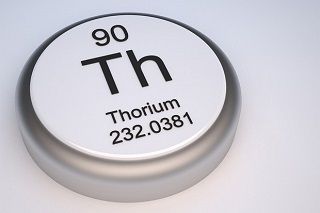Thorium-based Nuclear Reactors

I would only point out two very important things here, despite all the numerous things to like about LFTRs (liquid fluoride thorium reactors):
• Contrary to what most of its proponents claim, we’re a very long way, in both time and dollars, from a commercializable version of this technology
• Wind and solar energy are not bad ideas, simply because LFTRs have the potential to be even better. I find few things more loathsome than the nuke people tearing down wind and solar for specious reasons, e.g., that they take up more room than nuclear power plants. Yes, nuclear reactors have smaller physical footprints, but that’s in my estimation not even in the top 10 criteria on which to judge the validity of an energy source.

Craig,
First: we agree almost fully here.
Second, LFTR: Liquid Fluoride Thorium Reactor
Third: On the footprints of various energy sources, the proponents of nuclear tend to want to count just the dimensions of the concrete dome, or in some cases just the dimensions of the reactor core… while for wind they wish to count the dimensions of the entire wind farm…
But for wind, less than 1% of a wind farm’s land area is lost to things like maintenance roads and fenced-off security areas around the tower, while the rest of the land is easily available for crops or livestock or even buildings in some cases. Meanwhile, the very small reactor core has a very large 3-mile radius zone around it in which nothing can be done – other than (ironically) raise wind towers or solar heliostats or a geothermal well… or something of that nature.
😉
Fourth, The biggest problem with the prospect of novel nuclear reactors is the NRC and NIMBYISM. While thorium reactors have a significant advantage in total fuel availability and in total fuel consumption, they’re still a fission reactor… the only significant difference in the level of safety between a traditional nuclear reactor design and the LFTR is the LFTR is new technology that is untested and unsure… Imagine how much easier it will be to lobby to get that passed through a local zoning commission. They will also have to go through the NRC – the most cautious organization in the history of the world – before being able to be implemented. I’d guess that it will be at least 2030 before the first LFTR is operational in the U.S., and it may be another 5-10 years after that before they lose their novelty and become plausible for most of the rest of the country.
Note – I’m avidly pro-nuclear and see absolutely nothing wrong with even the current technology, I support the use of breeders, and support the nationalization and consolidation of waste disposal. But like you, I’m also avidly pro wind and pro solar and pro geothermal in situations where they make sense.
Ack! I fixed that typo; thanks. Making a mistake of that order is like confusing “to” with “two” or “too.”
Excellent points. Btw, the nuclear people (somehow) dispute what you’re saying about land use for wind.
Craig,
Ha! I’d love to see an attempt at refutation. I have personally driven by a wind farm that had cattle grazing within 20 feet of a wind tower. I should have taken a picture.
*shrug*
It’s sad when an advocate tries to promote their technology only by lying about others. In my view, if you can only sell your technology by lying about competitive technology, you’ve effectively identified yourself as an advocate for a non-viable solution. I believe that LFTR will be an important viable solution, so when they just lay down and pretend to be advocates for an assured failure it’s disappointing. They’re doing incredible damage to their cause.
That’s what I’ve tried to communicate to them numerous time, without success.